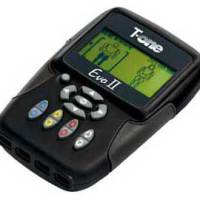 To cause an isometric contraction or a voluntary movement, the brain generates an impulse which travels through the central nervous system to the motor nerve. It produces a discharge in the muscular motor plate and creates a regular contraction or movement. It’s a very complex process; at the same time neurons very quickly replace others, producing polarisation and depolarisation pheromones until finally the desired objective is achieved: a contraction. The intensity of this will be more or less directly related to the intensity of the initial stimulus, such that a threshold must be reached to induce the minimum contraction. Below this threshold a contraction will not be produced, and as the stimulus raises, so does the intensity of the contraction or of the movement.
To cause an isometric contraction or a voluntary movement, the brain generates an impulse which travels through the central nervous system to the motor nerve. It produces a discharge in the muscular motor plate and creates a regular contraction or movement. It’s a very complex process; at the same time neurons very quickly replace others, producing polarisation and depolarisation pheromones until finally the desired objective is achieved: a contraction. The intensity of this will be more or less directly related to the intensity of the initial stimulus, such that a threshold must be reached to induce the minimum contraction. Below this threshold a contraction will not be produced, and as the stimulus raises, so does the intensity of the contraction or of the movement.Neuromuscular electro-stimulation causes an electrical discharge in the skin which travels to the motor nerve and induces a discharge in the motor plate, thus producing a contraction. It is not the brain so much as the electro-stimulator which is in charge of generating the electrical impulse which, travelling through the nerve, has the desired affect. Whether as a voluntary contraction or as a contraction caused by electrical equipment, the result is the same; a muscular contraction.
-

I-TECH – MIO-CARE TENS Elektrotherapy
Add to cartDelivery Time: ca. 3-4 Werktage -

I-TECH – MIO-CARE FITNESS + TENS
Add to cartDelivery Time: ca. 3-4 Werktage -

I-TECH – MIO-CARE BEAUTY + TENS
Add to cartDelivery Time: ca. 3-4 Werktage -

ITECH – Mio-Peristim Incontinenz + TENS
Select optionsDelivery Time: ca. 3-4 Werktage -

I-TECH – T-ONE MEDI PRO * 4 channels * REHA + TENS + Fitness + Incontinence + Ionophorese +
Add to cartDelivery Time: ca. 3-4 Werktage -

I-TECH – T-ONE MEDI * 4 channels * REHA + TENS
Add to cartDelivery Time: ca. 3-4 Werktage -
Sale!

I-TECH – T-ONE EVO II *4 channels TENS + EMS (Sport) + Beauty
Add to cartDelivery Time: ca. 3-4 Werktage -
Sale!

I-TECH – T-ONE EVO I *4 channels TENS (only some) + EMS (Sport) + Beauty
Add to cartDelivery Time: ca. 3-4 Werktage -

I-TECH – PHYSIO *All in one* incl. all Programs of all 2 channels products + denerved muscle
Add to cartDelivery Time: ca. 3-4 Werktage -

I-TECH – MIO-VEIN heavy legs, venous diseases
Add to cartDelivery Time: ca. 3-4 Werktage -

I-TECH – MIO-INOTENS Ionophorese + TENS
Add to cartDelivery Time: ca. 10 Werktage -

I-TECH – MIO Care Pro *3 in 1* + TENS + Reha + Sport
Add to cartDelivery Time: ca. 3-4 Werktage
